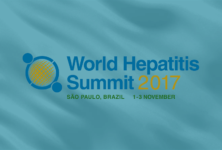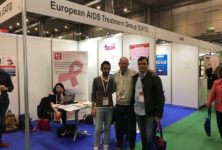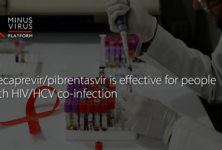Gene therapy — which involves modifying genetic material, such as DNA and RNA — holds exciting potential as a cure for numerous diseases and conditions, including HIV.
Timothy Brown (the “Berlin patient”) remains the only person known to have been cured of HIV. Brown received a stem cell transplant from a donor with a rare genetic mutation known as CCR5-delta 32, which conferred resistance to HIV infection. More than eight years later, he remains free of the virus.
“This sole case of HIV cure strongly suggests that gene therapy may be a promising route to cure HIV,” states amfAR Vice President and Director of Research Dr. Rowena Johnston. “But several technological challenges must be resolved.”
In a commentary published in AIDS Patient Care and STDs, Johnston discusses what needs to be done to overcome those challenges, including increasing the effectiveness of gene editing, targeting it to the right cells in the body, and optimizing the length of time it stays in the body to safely achieve its goal.
She adds that delivery of a gene therapy intervention to HIV-infected people around the world will also be a considerable challenge.
Johnston writes that one of the most challenging barriers is editing cells in vivo (within a patient’s body) instead of removing them, editing them in a lab, and then reinserting them back into the patient. Another key to success is locating the genes that must be manipulated, as the cells hosting the DNA or RNA to be targeted are scattered throughout the body. And even once both goals are achieved, participants at a recent amfAR-convened meeting calculated that, if the gene therapy is not targeted specifically to those cells that need it, “the cost to manufacture sufficient product to cure a single patient would be approximately $1 billion.”
She notes, though, that the advantages of gene therapy include the ability to target specific genes, potency, permanence (perhaps protecting the patient from subsequent infection), one-time application, and the potential to circumvent the defective immune response.
Despite the seemingly Herculean challenges, there are reasons to be optimistic. A combination of gene-editing techniques is currently being tested on numerous targets. For example, researchers from the University of California, San Francisco, and its affiliated Gladstone Institutes are using a gene-editing tool known as CRISPR to identify mutations that make immune cells resistant to HIV.
amfAR recently issued a request for proposals soliciting new gene therapy ideas and approaches to overcome the main barrier to a cure: persistent reservoirs of virus not cleared by antiretroviral treatment (ART).
But the feasibility of a gene therapy approach to an HIV cure remains uncertain, according to Johnston. The timeline, cost and complexity of testing gene therapy in clinical trials are “formidable.”
“Even after successful clinical trials, there (is) the practicality of curing millions of people, the majority of whom are in sub-Saharan Africa, using gene therapy,” she writes.
Regardless, she concludes: “The Berlin Patient and the results of several clinical trials … suggest that despite the challenges, gene therapy is a promising avenue in the quest for a cure.”
Read the entire commentary here.


 ПОИСК ПО САЙТУ
ПОИСК ПО САЙТУ  поиск по ресурсному центру
поиск по ресурсному центру 



